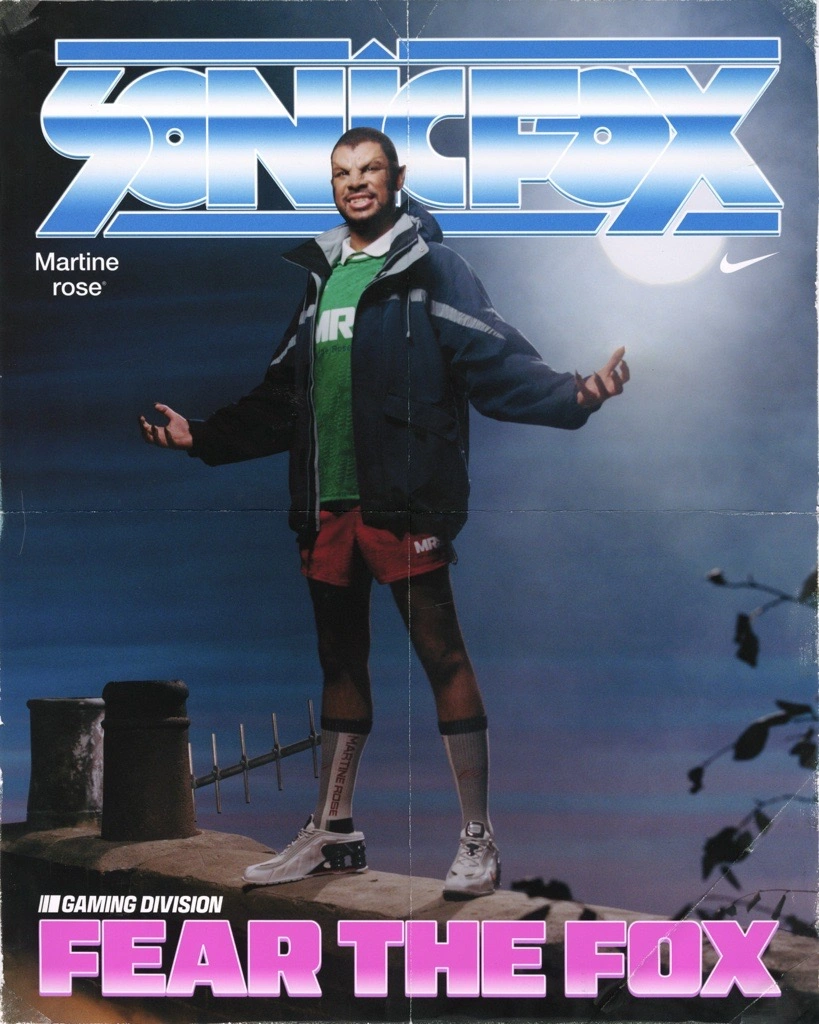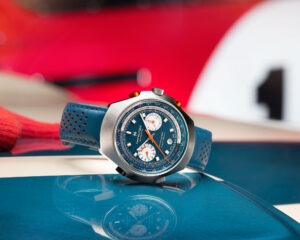In a time before globalized leisure, before air travel became a commercial routine and not a cultural event, to fly was to enact a kind of ritual. The runway was not simply asphalt—it was theater. And the aircraft, more than just a vehicle, was a vessel of dreams. It is within this precise moment, crystalline and full of possibility, that Norman Parkinson placed his lens.
In The Art of Travel View 2, 1951, Parkinson doesn’t simply document a model in a dress. He composes a mythos of modern femininity, aviation, and postwar luxury. His wife, muse, and frequent subject Wenda Parkinson, stands poised at the edge of a Hermes propeller plane on the tarmac of George Airfield, Nairobi, wrapped in a sharply tailored grey gabardine dress by Dorville, her presence more elemental than decorative. The image, produced for the May 1951 issue of British Vogue, is now an icon not only of fashion photography but of cultural transition: from empire to cosmopolitanism, from rationed restraint to renewed indulgence.
Parkinson was not just creating fashion photographs—he was chronicling a new world order through couture.
Norman Parkinson: Portraitist of Postwar Possibility
Born in 1913, Norman Parkinson emerged from the lineage of British portraiture with the instincts of a storyteller. His images were not static but cinematic. He understood early that fashion photography could move beyond the studio—that it could enter the world, fold landscape into silhouette, and wrap weather into narrative.
After serving during World War II, Parkinson returned to a Europe that was beginning to reimagine itself. The war had stripped away pretense, but not aspiration. If anything, aspiration had intensified: fashion was no longer just about display—it was about identity, escape, transformation. Parkinson’s genius lay in seeing this moment for what it was: not simply the rebirth of glamour, but glamour as a response to fragility.
His postwar work, particularly for British Vogue, exemplified this pivot. Models stood not in salons but in fields, on beaches, in front of airplanes and on African savannahs. The world became both backdrop and character. Parkinson’s camera was never still—it wandered, like the rest of society, toward mobility, modernity, and myth.
Wenda Parkinson: Model, Muse, Medium
In The Art of Travel View 2, it is impossible to separate subject from story. Wenda Rogerson, a top British model who became Wenda Parkinson upon marrying Norman in 1947, was not only the image’s focus but its co-creator. With her statuesque frame and sculptural features, Wenda embodied a kind of postwar ideal: elegant yet grounded, capable of expressing both fashion and fortitude.
Her pose beside the Hermes aircraft is casual but composed. She does not smile, nor does she seduce. She simply stands—as if waiting for her flight, or perhaps for history to catch up. The Dorville grey gabardine dress hugs her body with an architectural precision that reflects the mood of 1951: neat, pragmatic, forward-facing. Gabardine—a durable, tightly woven fabric—had military connotations during the war, but here, it has been transformed into something sleek, sculptural, almost aerodynamic.
Wenda’s expression is not one of detachment, but of quiet control. She is not a passenger in this image, but a navigator of its emotional airspace.
The Setting: Nairobi and the Dream of the Elsewhere
The image’s location—George Airfield in Nairobi, Kenya—is no minor detail. At the time, Kenya was still under British colonial rule. The juxtaposition of London couture and African soil is, in today’s terms, politically charged. But in Parkinson’s 1951 photograph, it serves a dual purpose: first, as a literal expression of the global reach of fashion, and second, as a visual metaphor for the postwar desire to escape, expand, and explore.
In the postwar era, the concept of “the elsewhere” gained cultural traction. With economies recovering and air travel becoming more accessible to the elite, distant destinations became symbols of renewal. British Vogue understood this; fashion was not only about garments but about transport—emotional, geographic, psychological.
By placing Wenda in Nairobi, Parkinson captured the confluence of style and space. The Hermes airplane—its nose angled toward some unknown horizon—serves not just as a prop, but as a promise. The viewer is invited to imagine what lies ahead, what waits beyond the tarmac. The dress becomes a passport. The photograph, a boarding call.
Fashion as Flight: The Semiotics of Gabardine
The choice of garment—a grey gabardine dress by Dorville—is essential to the image’s mood and message. Gabardine, pioneered by Thomas Burberry in the late 19th century, had military and utilitarian associations. It was the fabric of trench coats, of endurance, of wartime necessity. But by 1951, gabardine was undergoing a renaissance. Designers began to see its potential not just for function, but for form.
Dorville, a leading British couture house at the time, used the fabric not to armor the body but to articulate it. In this dress, gabardine is sculpted into elegance. The neutral grey tone suggests sophistication without ostentation—a color that aligns with the austerity-meets-modernism aesthetic of early ’50s Britain.
More than a textile, gabardine becomes in this photograph a metaphor for transformation—from survival to style, from war to peace, from groundedness to flight.
British Vogue, May 1951: A New Editorial Horizon
Parkinson’s image appeared in the May 1951 issue of British Vogue, a magazine that was itself evolving. Under the editorial direction of Audrey Withers, Vogue had embraced not just fashion but postwar reconstruction—aesthetic, emotional, and geopolitical. The magazine chronicled not only what to wear, but how to re-enter the world after devastation.
In this context, The Art of Travel View 2 was more than fashion photography—it was a cultural gesture. It said: we are moving forward. We are dressing for the journey. We are women who don’t just travel—we arrive.
The series “The Art of Travel,” from which this image is drawn, is significant for its fusion of reportage and elegance. Parkinson doesn’t just style a model in a faraway place; he creates a narrative architecture, one that incorporates planes, places, and poise into a singular vision.
Photography as Allegory: Time, Motion, and the Feminine Image
While fashion often thrives in the ephemeral, Parkinson’s work has the weight of allegory. In this photograph, flight is not just literal—it is symbolic. The airplane speaks to new freedoms. The grey dress to evolved femininity. The African runway to geopolitical tension and transformation. Wenda Parkinson stands at the confluence of all these forces, unmoved, unshaken, a figure of cultivated balance.
Parkinson’s composition—horizontal lines of tarmac, vertical poise of the model, diagonal thrust of the aircraft’s fuselage—creates a dynamic visual grammar. The photograph lives in suspended motion. It is a moment between departure and arrival, between old world and new.
In doing so, it becomes more than an image—it becomes a mirror of 1951 itself: a year on the threshold.
Legacy and Echo: Why This Image Endures
Decades later, The Art of Travel View 2 continues to resonate. It appears in retrospectives, museum collections, and fashion textbooks not merely for its aesthetic precision, but for its emotional clarity. It captures a fleeting yet definitive truth: that fashion, when framed correctly, can articulate the spirit of a time better than politics or prose.
Norman Parkinson’s photograph is a study in contrasts—of softness and strength, of motion and stasis, of Europe and Africa, of function and grace. It does what all great art aspires to do: it crystallizes complexity into a single frame.
Today, in an era obsessed with instant imagery, Parkinson’s work reminds us that photography can still carry intention. That behind every dress and pose and shadow lies a story—not just of fabric, but of futures imagined.
No comments yet.








